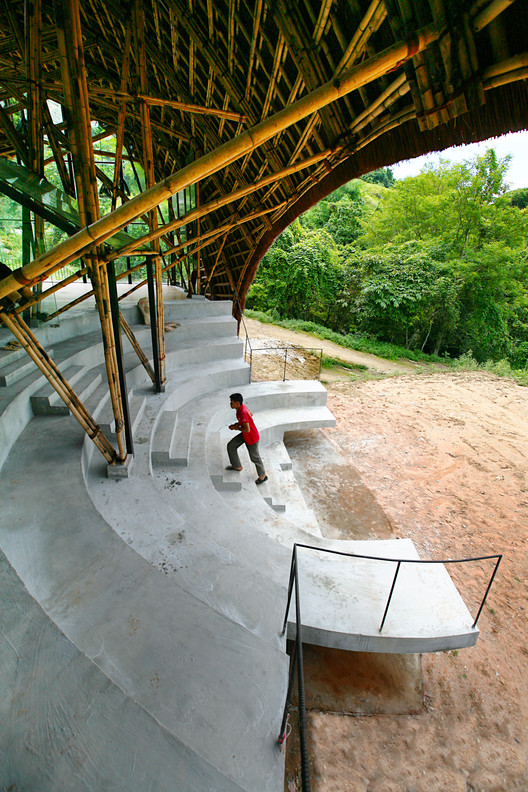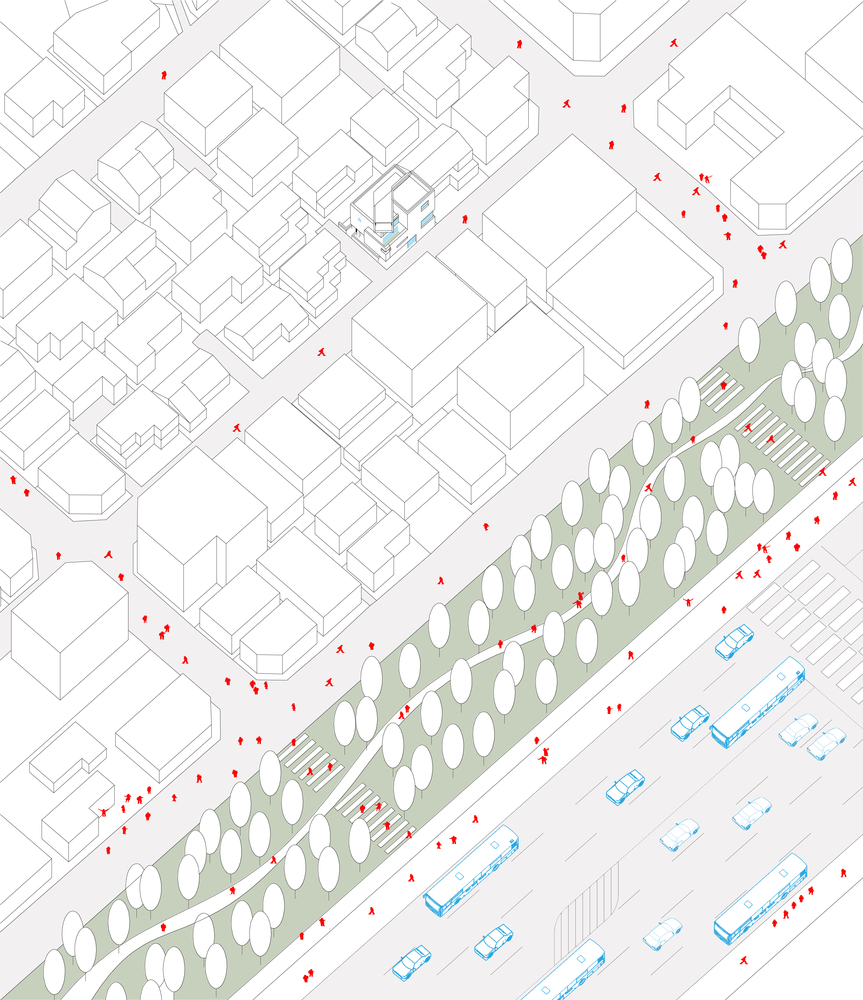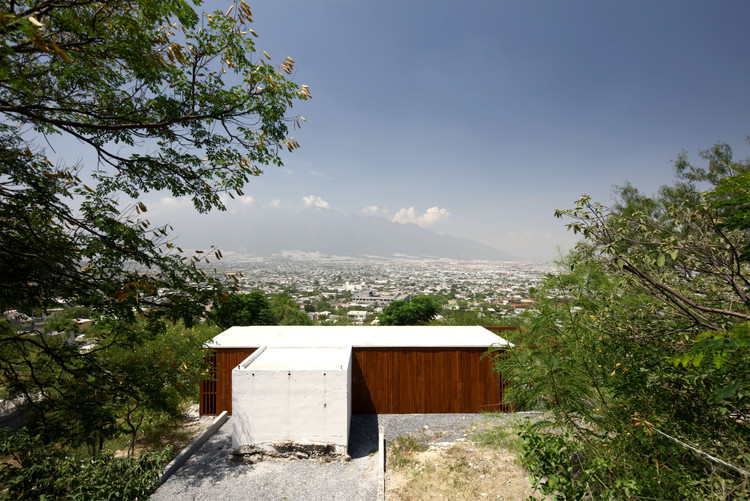St. Nicolaaslyceum DP6
2012-12-21 01:00
架构师提供的文本描述。一所独特的学校,在一个独特的位置。圣尼古拉斯莱辛是一个完整的社会组成部分,在教育方面有着雄心勃勃的现代观点和开放的观点。体育和文化是使学校脱颖而出的先锋队。基于一种激发教育和为学生提供挑战的愿景,这一设计导致了一座既提供安全又有挑战的建筑,同时也支持了教育理念。有广泛的文化表达的空间:中央中庭可以用作剧院与漂白楼梯,有展览的墙壁和展示厅。体育的概念已被纳入整个建筑。下陷低于地面,体育住宿提供广泛的体育设施,而在外面是覆盖篮球球场,学生可以使用在他们的休息。
Text description provided by the architects. A unique school in a unique location. The St. Nicolaaslyceum forms an integrated part of society, has ambitiously modern views and an open-minded outlook where education is concerned. Sports and culture are the spearheads that make the school stand out. Based on a vision that stimulates education and likes to offer its students a challenge, the design has resulted in a building that offers both security and challenges while supporting the educational concept. There is room for a wide range of cultural expression: the central atrium can be used as a theater with the bleacher stairs, there are exhibition walls and showcases. The concept of sports has been integrated in the building as a whole. Sunken below ground level, the sports accommodation offers extensive sports facilities, while on the outside it is covered with basketball pitches that students can use during their breaks.
中央中庭连接各种空间,提供充足的光线和空气,同时使建筑易于理解和导航。当你学习的时候,发现的概念在建筑中被通过工作和教学环境的巨大多样性,支持结构和系统的可见性,以及一个可视化学校的可持续性水平的互动面板来体现出来。
The central atrium connects the various spaces and provides ample light and air while making the building easy to understand and navigate. The concept of Discover as you Learn is made visible in the building by the large diversity of working and teaching environments, the visibility of the supporting structure and systems, and by an interactive panel that visualises the school’s sustainability level.
交织在一起的新建筑圣尼古拉斯莱姆位于阿姆斯特丹南轴,在那里贝多芬区与比阿特丽克斯公园。它的外部地区使学校成为其周围环境不可分割的一部分。中央中庭面向公园和公共广场,两个方向汇合在中庭,传达一种空间感。外部空间通过建筑物扇出,可以成为运动场、城市阳台、试验花园或屋顶露台供户外实验。体育厅已被调转,从贝多文斯特拉特逐渐开辟了一条入口路线。巨大的台阶提供了座位,使空间适合性能。建筑物底座的深灰色色调与室外空间融为一体。浅绿色的条纹,上面的教育水平,有一个柔软的浮雕,回荡在公园里的柳树。圆角和内部和外部空间之间的逐渐过渡给了建筑一个柔软和欢迎的外观。艺术家阿努克·沃格尔(AnoukVogel)创作的“镜子树”(The Mirror Tree)几乎是从字面上把公园拉进中庭,然后穿过更城市化的南侧。
Interwoven The new building of the St. Nicolaaslyceum is located along the Amsterdam South Axis, where the Beethoven District meets the Beatrix Park. Its outside areas make the school into an inseparable part of its surroundings. The central atrium is oriented towards the park and the public square, two directions that converge in the atrium to convey a sense of space. External spaces fan out through the building and can become playing field, urban balcony, trial garden or roof terrace for outdoor experiments. The sports hall has been turned around to create a gradual entrance route from the Beethovenstraat. The large expanse of steps provides seating to make the space suitable for performances. The dark grey tone of the building’s plinth blends in with the outdoor space. The pale green stripes of the educational level above it feature a soft relief that echoes the willows in the park. The rounded corners and the gradual transitions between internal and external spaces give the building a soft and welcoming look. The Mirror Tree by artist Anouk Vogel on the large glass facade almost literally pulls the park into the atrium and across to the more urbanised south side.
中央中庭通过五层楼形成了一个教育概念,形成了圣尼古拉斯莱切的心脏。这里是每个人进入大楼的地方,学生们在露天看台休息,剧院演出,学生和教师从那里涌向学校大楼的其他地方。从橡木漂白台阶上升起,中央楼梯在大厅周围盘旋上升,就像一条茄子地毯。每一层楼都能看到中央大厅的景色,使之成为一个完美的参照点,并在紧凑型建筑内营造一种亲密和安全的感觉。在较高的楼层,教室布置在外面,围绕着多功能开放区域。在漂白剂楼梯的顶部,多媒体中心坐落在阁楼下面,向北延伸到公园一侧的中庭屋顶。餐厅、员工室和多媒体中心的内部要素是与学校学生和工作人员密切协商设计的。
Giving shape to an educational concept The central atrium rises through five floors to form the heart of the St. Nicolaaslyceum. This is where everybody enters the building, where students have their break on the bleachers, where theatre productions are staged, and from where students and teachers fan out into the rest of the school building. Rising from the oak bleacher steps, the central staircase spirals upwards around the grand lobby like an aubergine carpet. Each of the floors offers a view of the central lobby, making it a perfect point of reference as well as creating a sense of intimacy and security inside the compact building. On the upper floors, the classrooms are arranged on the outside, surrounding multifunctional open areas. At the top of the bleacher stairs, the multimedia centre sits below the mezzanine space that stretches upwards to the atrium roof on the park side to the north. The interior elements for the restaurant, the staff room and the multimedia centre were designed in close consultation with the school’s students and staff.
St.Nicolaaslyceum设计的可持续性目标水平很高。对建筑、功能、支持结构、系统和建筑物理的全面设计方法已经产生了一个高度紧凑、可持续、灵活和优化的教育设施。一个紧凑的建筑,优化利用现有的日光,悬垂和遮阳帘在东面,南面和西面,日光控制的高频照明,自然耐用的材料,都是低科技的应用,已纳入整体设计。涉及更多技术的解决方案,如地下热和冷缓冲,与地板上的活性混凝土核心,平衡和二氧化碳控制的通风系统,热回收(和非常高的效率90%),以及光伏屋顶板,有助于使这是一个高度可持续的低能源建筑。更重要的是,这种可持续性通过一个“能量镜子”来显示学生的实际效果。
Sustainability The St. Nicolaaslyceum is designed with a high target level of sustainability on mind. The all-in design approach to architecture, functionality, supporting structure, systems and building physics has resulted in a highly compact, sustainable, flexible and optimised educational facility. A compact building, optimised use of available daylight, overhangs and sun blinds in the east, south and west facades, daylight-controlled high-frequency lighting, and naturally durable materials are all low-tech applications that have been integrated into the overall design. More technologically involved solutions such as underground heat and cold buffering in combination with an active concrete core in the floors, a balanced and carbon dioxide-controlled ventilation system with heat recovery (and a very high efficiency of 90%) as well as photovoltaic roof panels contribute to make this a highly sustainable low-energy building. What’s more, this sustainability is visualised by means of an ‘energy mirror’ to show the students what the actual effects are.
 举报
举报
别默默的看了,快登录帮我评论一下吧!:)
注册
登录
更多评论
相关文章
-

描边风设计中,最容易犯的8种问题分析
2018年走过了四分之一,LOGO设计趋势也清晰了LOGO设计
-

描边风设计中,最容易犯的8种问题分析
2018年走过了四分之一,LOGO设计趋势也清晰了LOGO设计
-

描边风设计中,最容易犯的8种问题分析
2018年走过了四分之一,LOGO设计趋势也清晰了LOGO设计






















































